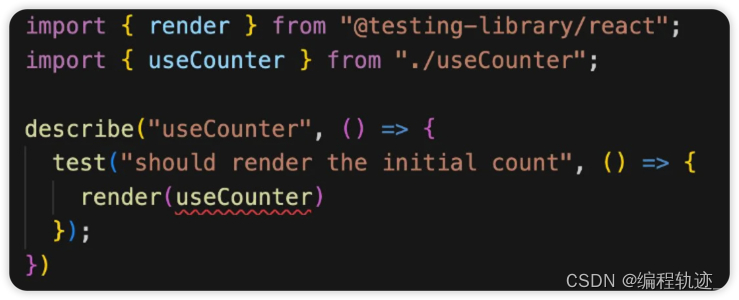这些顶点是如何在剪辑坐标(-1,1)中结束的?
提问于 2019-02-14 00:37:25
大家好,这几天我一直在学习webGl,并且在webGl2上读了这本教科书。
下面是本书中的一个例子。
'use strict';
// A set of utility functions for /common operations across our application
const utils = {
// Find and return a DOM element given an ID
getCanvas(id) {
const canvas = document.getElementById(id);
if (!canvas) {
console.error(`There is no canvas with id ${id} on this page.`);
return null;
}
return canvas;
},
// Given a canvas element, return the WebGL2 context
getGLContext(canvas) {
return canvas.getContext('webgl2') || console.error('WebGL2 is not available in your browser.');
},
// Given a canvas element, expand it to the size of the window
// and ensure that it automatically resizes as the window changes
autoResizeCanvas(canvas) {
const expandFullScreen = () => {
canvas.width = window.innerWidth;
canvas.height = window.innerHeight;
};
expandFullScreen();
// Resize screen when the browser has triggered the resize event
window.addEventListener('resize', expandFullScreen);
},
// Given a WebGL context and an id for a shader script,
// return a compiled shader
getShader(gl, id) {
const script = document.getElementById(id);
if (!script) {
return null;
}
const shaderString = script.text.trim();
let shader;
if (script.type === 'x-shader/x-vertex') {
shader = gl.createShader(gl.VERTEX_SHADER);
} else if (script.type === 'x-shader/x-fragment') {
shader = gl.createShader(gl.FRAGMENT_SHADER);
} else {
return null;
}
gl.shaderSource(shader, shaderString);
gl.compileShader(shader);
if (!gl.getShaderParameter(shader, gl.COMPILE_STATUS)) {
console.error(gl.getShaderInfoLog(shader));
return null;
}
return shader;
},
// Normalize colors from 0-255 to 0-1
normalizeColor(color) {
return color.map(c => c / 255);
},
// De-normalize colors from 0-1 to 0-255
denormalizeColor(color) {
return color.map(c => c * 255);
},
// Returns computed normals for provided vertices.
// Note: Indices have to be completely defined--NO TRIANGLE_STRIP only TRIANGLES.
calculateNormals(vs, ind) {
const
x = 0,
y = 1,
z = 2,
ns = [];
// For each vertex, initialize normal x, normal y, normal z
for (let i = 0; i < vs.length; i += 3) {
ns[i + x] = 0.0;
ns[i + y] = 0.0;
ns[i + z] = 0.0;
}
// We work on triads of vertices to calculate
for (let i = 0; i < ind.length; i += 3) {
// Normals so i = i+3 (i = indices index)
const v1 = [],
v2 = [],
normal = [];
// p2 - p1
v1[x] = vs[3 * ind[i + 2] + x] - vs[3 * ind[i + 1] + x];
v1[y] = vs[3 * ind[i + 2] + y] - vs[3 * ind[i + 1] + y];
v1[z] = vs[3 * ind[i + 2] + z] - vs[3 * ind[i + 1] + z];
// p0 - p1
v2[x] = vs[3 * ind[i] + x] - vs[3 * ind[i + 1] + x];
v2[y] = vs[3 * ind[i] + y] - vs[3 * ind[i + 1] + y];
v2[z] = vs[3 * ind[i] + z] - vs[3 * ind[i + 1] + z];
// Cross product by Sarrus Rule
normal[x] = v1[y] * v2[z] - v1[z] * v2[y];
normal[y] = v1[z] * v2[x] - v1[x] * v2[z];
normal[z] = v1[x] * v2[y] - v1[y] * v2[x];
// Update the normals of that triangle: sum of vectors
for (let j = 0; j < 3; j++) {
ns[3 * ind[i + j] + x] = ns[3 * ind[i + j] + x] + normal[x];
ns[3 * ind[i + j] + y] = ns[3 * ind[i + j] + y] + normal[y];
ns[3 * ind[i + j] + z] = ns[3 * ind[i + j] + z] + normal[z];
}
}
// Normalize the result.
// The increment here is because each vertex occurs.
for (let i = 0; i < vs.length; i += 3) {
// With an offset of 3 in the array (due to x, y, z contiguous values)
const nn = [];
nn[x] = ns[i + x];
nn[y] = ns[i + y];
nn[z] = ns[i + z];
let len = Math.sqrt((nn[x] * nn[x]) + (nn[y] * nn[y]) + (nn[z] * nn[z]));
if (len === 0) len = 1.0;
nn[x] = nn[x] / len;
nn[y] = nn[y] / len;
nn[z] = nn[z] / len;
ns[i + x] = nn[x];
ns[i + y] = nn[y];
ns[i + z] = nn[z];
}
return ns;
},
// A simpler API on top of the dat.GUI API, specifically
// designed for this book for a simpler codebase
configureControls(settings, options = {
width: 300
}) {
// Check if a gui instance is passed in or create one by default
const gui = options.gui || new dat.GUI(options);
const state = {};
const isAction = v => typeof v === 'function';
const isFolder = v =>
!isAction(v) &&
typeof v === 'object' &&
(v.value === null || v.value === undefined);
const isColor = v =>
(typeof v === 'string' && ~v.indexOf('#')) ||
(Array.isArray(v) && v.length >= 3);
Object.keys(settings).forEach(key => {
const settingValue = settings[key];
if (isAction(settingValue)) {
state[key] = settingValue;
return gui.add(state, key);
}
if (isFolder(settingValue)) {
// If it's a folder, recursively call with folder as root settings element
return utils.configureControls(settingValue, {
gui: gui.addFolder(key)
});
}
const {
value,
min,
max,
step,
options,
onChange = () => null,
} = settingValue;
// set state
state[key] = value;
let controller;
// There are many other values we can set on top of the dat.GUI
// API, but we'll only need a few for our purposes
if (options) {
controller = gui.add(state, key, options);
} else if (isColor(value)) {
controller = gui.addColor(state, key)
} else {
controller = gui.add(state, key, min, max, step)
}
controller.onChange(v => onChange(v, state))
});
},
// Calculate tangets for a given set of vertices
calculateTangents(vs, tc, ind) {
const tangents = [];
for (let i = 0; i < vs.length / 3; i++) {
tangents[i] = [0, 0, 0];
}
let
a = [0, 0, 0],
b = [0, 0, 0],
triTangent = [0, 0, 0];
for (let i = 0; i < ind.length; i += 3) {
const i0 = ind[i];
const i1 = ind[i + 1];
const i2 = ind[i + 2];
const pos0 = [vs[i0 * 3], vs[i0 * 3 + 1], vs[i0 * 3 + 2]];
const pos1 = [vs[i1 * 3], vs[i1 * 3 + 1], vs[i1 * 3 + 2]];
const pos2 = [vs[i2 * 3], vs[i2 * 3 + 1], vs[i2 * 3 + 2]];
const tex0 = [tc[i0 * 2], tc[i0 * 2 + 1]];
const tex1 = [tc[i1 * 2], tc[i1 * 2 + 1]];
const tex2 = [tc[i2 * 2], tc[i2 * 2 + 1]];
vec3.subtract(a, pos1, pos0);
vec3.subtract(b, pos2, pos0);
const c2c1b = tex1[1] - tex0[1];
const c3c1b = tex2[0] - tex0[1];
triTangent = [c3c1b * a[0] - c2c1b * b[0], c3c1b * a[1] - c2c1b * b[1], c3c1b * a[2] - c2c1b * b[2]];
vec3.add(triTangent, tangents[i0], triTangent);
vec3.add(triTangent, tangents[i1], triTangent);
vec3.add(triTangent, tangents[i2], triTangent);
}
// Normalize tangents
const ts = [];
tangents.forEach(tan => {
vec3.normalize(tan, tan);
ts.push(tan[0]);
ts.push(tan[1]);
ts.push(tan[2]);
});
return ts;
}
};
'use strict';
let
gl,
program,
vao,
indices,
indicesBuffer,
modelViewMatrix = mat4.create(),
projectionMatrix = mat4.create(),
normalMatrix = mat4.create();
function initProgram() {
// Configure `canvas`
const canvas = utils.getCanvas('webgl-canvas');
utils.autoResizeCanvas(canvas);
// Configure `gl`
gl = utils.getGLContext(canvas);
gl.clearColor(0.9, 0.9, 0.9, 1);
gl.clearDepth(100);
gl.enable(gl.DEPTH_TEST);
gl.depthFunc(gl.LEQUAL);
// Shader source
const vertexShader = utils.getShader(gl, 'vertex-shader');
const fragmentShader = utils.getShader(gl, 'fragment-shader');
// Configure `program`
program = gl.createProgram();
gl.attachShader(program, vertexShader);
gl.attachShader(program, fragmentShader);
gl.linkProgram(program);
if (!gl.getProgramParameter(program, gl.LINK_STATUS)) {
console.error('Could not initialize shaders');
}
gl.useProgram(program);
// Set locations onto `program` instance
program.aVertexPosition = gl.getAttribLocation(program, 'aVertexPosition');
program.aVertexNormal = gl.getAttribLocation(program, 'aVertexNormal');
program.uProjectionMatrix = gl.getUniformLocation(program, 'uProjectionMatrix');
program.uModelViewMatrix = gl.getUniformLocation(program, 'uModelViewMatrix');
program.uNormalMatrix = gl.getUniformLocation(program, 'uNormalMatrix');
program.uLightDirection = gl.getUniformLocation(program, 'uLightDirection');
program.uLightAmbient = gl.getUniformLocation(program, 'uLightAmbient');
program.uLightDiffuse = gl.getUniformLocation(program, 'uLightDiffuse');
program.uMaterialDiffuse = gl.getUniformLocation(program, 'uMaterialDiffuse');
}
// Configure lights
function initLights() {
gl.uniform3fv(program.uLightDirection, [0, 0, -1]);
gl.uniform4fv(program.uLightAmbient, [0.01, 0.01, 0.01, 1]);
gl.uniform4fv(program.uLightDiffuse, [0.5, 0.5, 0.5, 1]);
gl.uniform4f(program.uMaterialDiffuse, 0.1, 0.5, 0.8, 1);
}
/**
* This function generates the example data and create the buffers
*
* 4 5 6 7
* +----------+-------------+---------+
* | | | |
* | | | |
* | | | |
* | | | |
* | | | |
* +----------+-------------+---------+
* 0 1 2 3
*
*/
function initBuffers() {
const vertices = [-20, -8, 20, // 0
-10, -8, 0, // 1
10, -8, 0, // 2
20, -8, 20, // 3
-20, 8, 20, // 4
-10, 8, 0, // 5
10, 8, 0, // 6
20, 8, 20 // 7
];
indices = [
0, 5, 4,
1, 5, 0,
1, 6, 5,
2, 6, 1,
2, 7, 6,
3, 7, 2
];
// Create VAO
vao = gl.createVertexArray();
// Bind Vao
gl.bindVertexArray(vao);
const normals = utils.calculateNormals(vertices, indices);
const verticesBuffer = gl.createBuffer();
gl.bindBuffer(gl.ARRAY_BUFFER, verticesBuffer);
gl.bufferData(gl.ARRAY_BUFFER, new Float32Array(vertices), gl.STATIC_DRAW);
//console.log('vertices', vertices);
// Configure instructions
gl.enableVertexAttribArray(program.aVertexPosition);
gl.vertexAttribPointer(program.aVertexPosition, 3, gl.FLOAT, false, 0, 0);
const normalsBuffer = gl.createBuffer();
gl.bindBuffer(gl.ARRAY_BUFFER, normalsBuffer);
gl.bufferData(gl.ARRAY_BUFFER, new Float32Array(normals), gl.STATIC_DRAW);
// Configure instructions
gl.enableVertexAttribArray(program.aVertexNormal);
gl.vertexAttribPointer(program.aVertexNormal, 3, gl.FLOAT, false, 0, 0);
indicesBuffer = gl.createBuffer();
gl.bindBuffer(gl.ELEMENT_ARRAY_BUFFER, indicesBuffer);
gl.bufferData(gl.ELEMENT_ARRAY_BUFFER, new Uint16Array(indices), gl.STATIC_DRAW);
// Clean
gl.bindVertexArray(null);
gl.bindBuffer(gl.ARRAY_BUFFER, null);
gl.bindBuffer(gl.ELEMENT_ARRAY_BUFFER, null);
}
function draw() {
const {
width,
height
} = gl.canvas;
gl.viewport(0, 0, width, height);
gl.clear(gl.COLOR_BUFFER_BIT | gl.DEPTH_BUFFER_BIT);
mat4.perspective(projectionMatrix, 45, width / height, 0.1, 10000);
mat4.identity(modelViewMatrix);
mat4.translate(modelViewMatrix, modelViewMatrix, [0, 0, -40]);
mat4.copy(normalMatrix, modelViewMatrix);
mat4.invert(normalMatrix, normalMatrix);
mat4.transpose(normalMatrix, normalMatrix);
gl.uniformMatrix4fv(program.uModelViewMatrix, false, modelViewMatrix);
gl.uniformMatrix4fv(program.uProjectionMatrix, false, projectionMatrix);
gl.uniformMatrix4fv(program.uNormalMatrix, false, normalMatrix);
// We will start using the `try/catch` to capture any errors from our `draw` calls
try {
// Bind
gl.bindVertexArray(vao);
gl.bindBuffer(gl.ELEMENT_ARRAY_BUFFER, indicesBuffer);
// Draw
gl.drawElements(gl.TRIANGLES, indices.length, gl.UNSIGNED_SHORT, 0);
// Clean
gl.bindVertexArray(null);
gl.bindBuffer(gl.ARRAY_BUFFER, null);
gl.bindBuffer(gl.ELEMENT_ARRAY_BUFFER, null);
}
// We catch the `error` and simply output to the screen for testing/debugging purposes
catch (error) {
console.error(error);
}
}
function render() {
requestAnimationFrame(render);
draw();
}
function init() {
initProgram();
initBuffers();
initLights();
render();
}
init(); <script src="https://cdnjs.cloudflare.com/ajax/libs/gl-matrix/2.4.0/gl-matrix.js"></script>
<!-- modules -->
<!-- vertex Shader -->
<script id="vertex-shader" type="x-shader/x-vertex">
#version 300 es
precision mediump float;
uniform mat4 uModelViewMatrix;
uniform mat4 uProjectionMatrix;
uniform mat4 uNormalMatrix;
uniform vec3 uLightDirection;
uniform vec4 uLightAmbient;
uniform vec4 uLightDiffuse;
uniform vec4 uMaterialDiffuse;
in vec3 aVertexPosition;
in vec3 aVertexNormal;
out vec4 vVertexColor;
void main(void) {
vec3 N = vec3(uNormalMatrix * vec4(aVertexNormal, 1.0));
vec3 L = normalize(uLightDirection);
float lambertTerm = dot(N, -L);
// Ambient
vec4 Ia = uLightAmbient;
// Diffuse
vec4 Id = uMaterialDiffuse * uLightDiffuse * lambertTerm;
// Set varying to be used inside of fragment shader
vVertexColor = vec4(vec3(Ia + Id), 1.0);
gl_Position = uProjectionMatrix * uModelViewMatrix * vec4(aVertexPosition, 1.0);
}
</script>
<!-- fragment Shader -->
<script id="fragment-shader" type="x-shader/x-fragment">
#version 300 es
precision mediump float;
in vec4 vVertexColor;
out vec4 fragColor;
void main(void) {
fragColor = vVertexColor;
}
</script>
<canvas id="webgl-canvas"></canvas>
这里的顶点定义为
const vertices = [
-20, -8, 20, // 0
-10, -8, 0, // 1
10, -8, 0, // 2
20, -8, 20, // 3
-20, 8, 20, // 4
-10, 8, 0, // 5
10, 8, 0, // 6
20, 8, 20 // 7
];据我所知,webGl使用clipspace coordinates,它从-1到+1。但是这里这些顶点不在这个范围内。
有人能告诉我把这些顶点转换成clipspace coordinates的代码吗?我已经看了一段时间的代码,但似乎找不到它自己。
回答 1
Stack Overflow用户
回答已采纳
发布于 2019-02-14 00:55:58
请考虑在WebGL上阅读这些课程。Here are some that explain clipspace,这是解释how to use matrices to convert from some space to clipspace using matrix math的,这是解释how convert from 3D space to clipspace with matrix math的,解释how to get perspective with matrix math的,这是解释how cameras work with a view matrix的
在回答您的问题时,顶点着色器中的这条线
gl_Position = uProjectionMatrix * uModelViewMatrix * vec4(aVertexPosition, 1.0);通过选择要指定uProjectionMatrix和uModelViewMatrix的正确矩阵,将这些顶点转化为剪辑空间。uModelViewMatrix在视图空间中定位、缩放和定向模型。然后,uProjectionMatrix使用透视投影将视图空间转换为剪裁空间。
页面原文内容由Stack Overflow提供。腾讯云小微IT领域专用引擎提供翻译支持
原文链接:
https://stackoverflow.com/questions/54681570
复制相关文章














